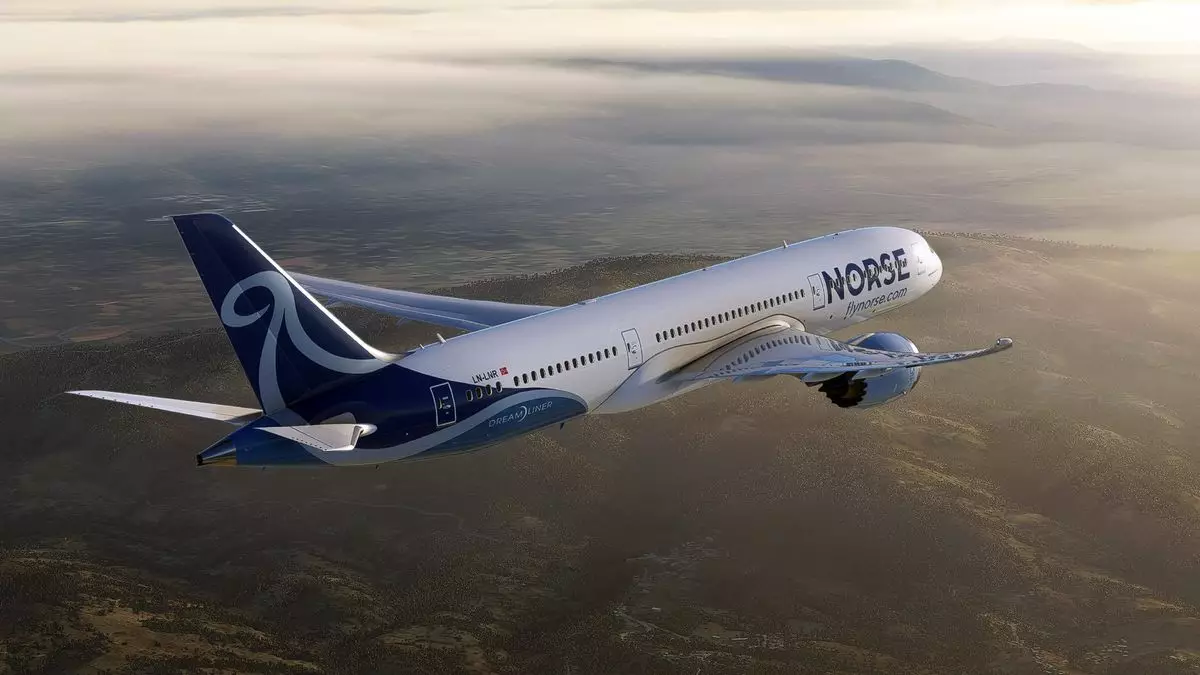The airline industry has witnessed transformative changes since the turbulence of the pandemic. As we delve into the current environment, we see independent leisure-focused airlines grappling against formidable competition and dwindling capacity. What was once a thriving market for budget airlines across the Atlantic has morphed into a battleground dominated by network carriers. This summer presents a sobering reality for several budding entrants—like Norse Atlantic Airways and Play Airlines—as they recalibrate their transatlantic strategies amidst overwhelming odds.
The Impact of Stiffer Competition
Recent statements from Play Airlines’ CEO Einar Orn Olafsson resonate with the overwhelming sentiment of many industry stakeholders: competition has escalated beyond pre-COVID benchmarks. The introduction of ultra-low-cost carriers aimed at capturing a broader audience initially brightened the transatlantic air travel landscape. However, with established network airlines like United, Air France, and Lufthansa expanding their capacity by a noticeable 3.9% year over year, the obstacles for new entrants seem daunting. These traditional airlines have launched extensive promotional campaigns and bolstered service offerings to recapture market share, which leaves smaller players struggling to carve out a niche.
Amidst such fierce competition, Play Airlines’ decision to retract flights to certain cities exemplifies the stark reality of market volatility. Its retreat from Baltimore and a reduced scope in U.S. operations underlines a painful lesson many budget airlines must face—the necessity of financial sustainability amid a highly seasonal demand that can prove unpredictable.
Condor Airlines: A Unique Position
While new entrants like Play and Norse face an uphill battle, established airlines like Condor Airlines are navigating their own unique challenges. Condor’s announcement to slash six out of its eighteen North American destinations is indicative of larger strategic struggles following the withdrawal of Lufthansa’s support for feeder routes. This adjustment not only highlights Condor’s vulnerabilities but also presents an opportunity to recalibrate its operational focus.
Condor’s new direction involves adding flights to nine European metropolises including Paris and Rome—an approach that contrasts with their historic offerings to tropical destinations. This pivot seeks to attract business travelers alongside vacationers, positioning Condor as a versatile choice within a competitive market. With its fleet mainly comprising Airbus A330neos, which support premium offerings such as business-class lie-flat seats, Condor is positing itself strategically against budget competitors.
While their pricing strategy offers significant discounts—25% to 50% less than legacy carriers—the real test lies in whether they can leverage this value proposition without the robust loyalty programs and name recognition that giants like Lufthansa command.
Capacity Adjustments and Future Directions
Both Play and Norse Atlantic have crafted plans to lease out portions of their fleet—a reflection of adaptive strategies becoming essential in this crowded market. Play’s partnership with a yet-undisclosed European operator and Norse Atlantic’s leasing maneuver to India’s Indigo signal a broader industry trend where operational scalability and prudent management are paramount.
It becomes clear that a substantial pivot toward direct, high-yield nonstop flights is necessary for long-term viability. Olafsson’s insights about marketing shifts underscore the importance of cultivating meaningful partnerships to establish a foothold in this competitive arena. However, these considerations inevitably place budget airlines at a disadvantage compared to the established premium offerings of larger players.
The Challenges of Seasonality
Industry expert John Strickland notes the ephemeral nature of transatlantic demand, particularly during winter months when lean operations can often lead to financial strain. Seasonal predictability has historically plagued low-cost carriers, and the specter of reduced winter operations looms for airlines like Play and Norse. Yet, for Condor, aligning its premium services with off-peak potential could bolster occupancy rates amid an otherwise slow season.
This competition, amid an environment that increasingly favors network airlines, raises critical questions regarding profitability and sustainability. While discount carriers can offer enticing fares, without strategic adaptations to evolving travel preferences and market dynamics, they risk fading into the shadows of an industry that continues to shift in favor of those with comprehensive service networks and loyalty structures.
As we move further into the post-pandemic world, the ability to navigate these challenges with agility will define the future landscape of transatlantic travel, particularly for those players that dare to disrupt the status quo. The coming months will ultimately reveal who can thrive amid intense competition and whom the harsh realities of the market will ground.


Leave a Reply